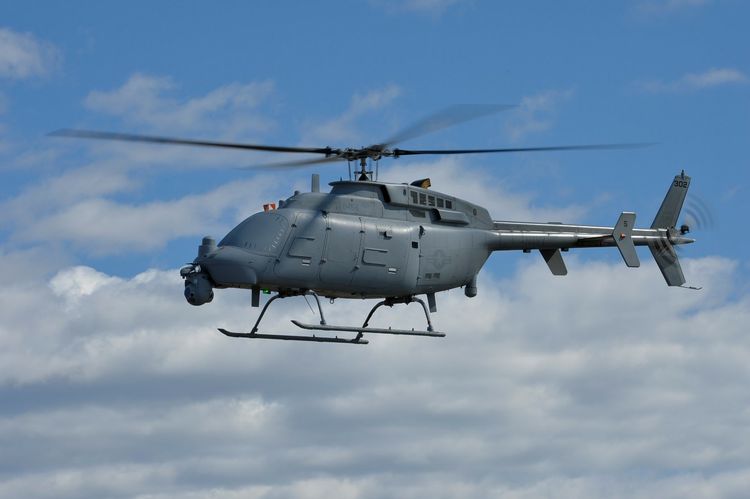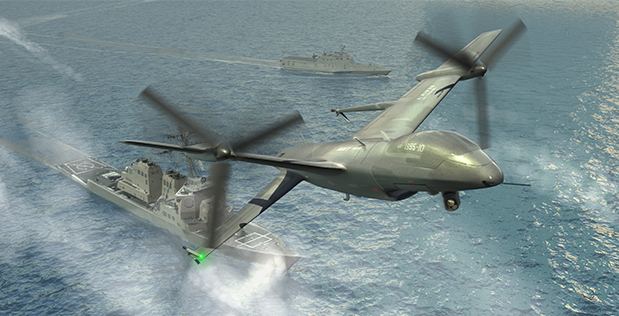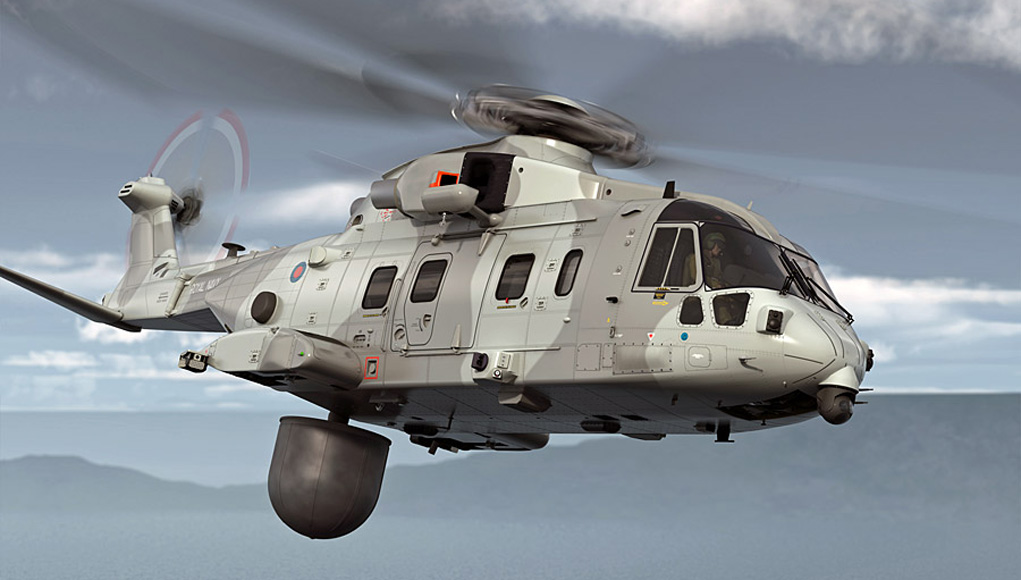Royal Australian Navy Discussions and Updates
- Thread starter icelord
- Start date
- Status
- Not open for further replies.
Now we don't want a repeat of HMS Sheffield.@Boagrius don't even think about it. Preceptor has a new rack that he's dying to try out and I've just finished making a new cat o'nine tails for him. It has some extras added to it.
You actually raise a valid point regarding OTHR surveillance for low level and sea skimming targets. One way is to place radar pickets at say 30 or 60 nm, but that requires more ships or USVs with the appropriate sensors. Either way it's costly. Finally there is the airborne option. The RAAF can provide surveillance using Wedgetails, but they will be limited by range and other taskings, so that leaves RAN organic airborne surveillance. What form that takes is quite debatable and the first point to find out is whether or not this is part of RAN CONOPS at the moment. If it isn't then it's in the nice to have basket, but not a critical need item.
If our ships are to sail into harms way only in the company of powerful friends then OTHR surveillance like many bits of yet to be acquired kit fall into the nice to have basket.
Suggest the RAN as a medium sized navy should have this capability in the must have basket.
As to the technology to satisfy this end well that's the tricky part.
What comes first.
The sensors or the aircraft.
Maybe it's something we may have to develop ourselves.
I could certainly see a market for such a platform that could be deployed off a destroyer.
Sovereign capability?????
Regards S
Boagrius
Well-Known Member
The more I think about it the more I realise what a tricky problem it is to solve. If we went down the smallish UAS-copter route (to be carried by DDG/FFG) you could overcome the endurance issue to some extent by having at least UAS one per surface combatant so that a task force with 3 or more DDG/FFG could have one of them aloft more or less continuously. Even so, given the UAS size constraints the sensor package could still be problematic. If you fit the thing with something approximating APG81, your angular coverage is still going to be limited to ~120deg in front of the drone, meaning it will likely be constrained by the task force's direction of travel. You could get around this by fitting multiple AEW style arrays for 360deg coverage, but this would probably come at the expense of individual aperture size and in turn performance.
The more ambitious route would be to go down the LHD-launched MALE/HALE UAS path (could even be an extremely tenuous loyal wingman spin-off), but even this would be quite tough. AFAIK launching them shouldn't be a huge problem - we might even be able to put the ski jump on the phat ships to use. To my mind it is recovery that presents the biggest challenge. LHD decks seem to be designed for vertical, not conventional landings. I suppose you could clear the deck each time the UAS needed to land (which, given its high endurance, shouldn't happen that frequently) but I don't know if this would be prohibitively intrusive for LHD CONOPS.
The more ambitious route would be to go down the LHD-launched MALE/HALE UAS path (could even be an extremely tenuous loyal wingman spin-off), but even this would be quite tough. AFAIK launching them shouldn't be a huge problem - we might even be able to put the ski jump on the phat ships to use. To my mind it is recovery that presents the biggest challenge. LHD decks seem to be designed for vertical, not conventional landings. I suppose you could clear the deck each time the UAS needed to land (which, given its high endurance, shouldn't happen that frequently) but I don't know if this would be prohibitively intrusive for LHD CONOPS.
Last edited:
Ten years ago the British EMKIT EM launcher had been thoroughly tested on land for small UAVs & was all set to be scaled up. Then the government lost interest, a US firm bought Converteam, & it turned into yet another one of those abandoned projects . . ....
The more ambitious route would be to go down the LHD-launched MALE/HALE UAS path (could even be an extremely tenuous loyal wingman spin-off), but even this would be quite tough. AFAIK launching them shouldn't be a huge problem - we might even be able to put the ski jump on the phat ships to use. To my mind it is recovery that presents the biggest challenge. LHD decks seem to be designed for vertical, not conventional landings. I suppose you could clear the deck each time the UAS needed to land (which, given its high endurance, shouldn't happen that frequently) but I don't know if this would be prohibitively intrusive for LHD CONOPS.
But yes, recovery would still be a problem.
Todjaeger
Potstirrer
What might be a better option would be something more along the lines of the APS-147 or APS-153(V) radar, which has been fitted to MH-60R Seahawks. While the radar itself was designed primarily for sea/surface search, the US had tested it over the Gulf of Mexico and determined that it could also detect and track aerial contacts. Of course there are other area search/surveillance radars which could be tried and tested, including ones with a rotating antenna. What I would be more concerned with is ensuring adequate signal integrity and bandwidth so that a radar operator or operators could get live signal feeds from whatever radar is fitted to the UAS.The more I think about it the more I realise what a tricky problem it is to solve. If we went down the smallish UAS-copter route (to be carried by DDG/FFG) you could overcome the endurance issue to some extent by having at least UAS one per surface combatant so that a task force with 3 or more DDG/FFG could have one of them aloft more or less continuously. Even so, given the UAS size constraints the sensor package could still be problematic. If you fit the thing with something approximating APG81, your angular coverage is still going to be limited to ~120deg in front of the drone, meaning it will likely be constrained by the task force's direction of travel. You could get around this by fitting multiple AEW style arrays for 360deg coverage, but this would probably come at the expense of individual aperture size and in turn performance.
The more ambitious route would be to go down the LHD-launched MALE/HALE UAS path (could even be an extremely tenuous loyal wingman spin-off), but even this would be quite tough. AFAIK launching them shouldn't be a huge problem - we might even be able to put the ski jump on the phat ships to use. To my mind it is recovery that presents the biggest challenge. LHD decks seem to be designed for vertical, not conventional landings. I suppose you could clear the deck each time the UAS needed to land (which, given its high endurance, shouldn't happen that frequently) but I don't know if this would be prohibitively intrusive for LHD CONOPS.
Boagrius
Well-Known Member
Yes that does sound sensible. The only remaining question to my mind is whether or not such a radar would be powerful enough to be useful. APS-153(V) is supposed to be capable of detecting ship sized targets out to ~200nm, but I would expect this figure to be much less for a lower RCS ASM presenting a head-on approach aspect. If the UAS can't significantly expand the task force's sensor footprint beyond the radar horizon then there may not be much point in using it, which brings you back to launching something larger off a flat-top or relying on land based aircraft.
Boagrius
Well-Known Member
Another contender could be the Osprey 30 AESA set from Leonardo. Designed to be fitted to helos and provides 360 angular coverage. Range claims are much the same as for APS-153(V) with the added function of air to air search, tracking & intercept. Performance against ASMs would again be a question but a UAS like MQ8C could conceivably keep something like this aloft for quite some time (~12hrs), all while perched above 10k feet. Worst case is you might need to position it between the task force and likely enemy approaches, but it could be a damn sight better than nothing.
EDIT: It seems the Osprey 30 is already in the process of being fitted to the USN's MQ8C under the designation AN/ZPY-8. With a high bandwidth datalink this may very well provide a solid interim solution to the OTHR problem.

 navaltoday.com
navaltoday.com
EDIT: It seems the Osprey 30 is already in the process of being fitted to the USN's MQ8C under the designation AN/ZPY-8. With a high bandwidth datalink this may very well provide a solid interim solution to the OTHR problem.

MQ-8C Fire Scout begins flight tests with AN/ZPY-8 radar
The US Navy, with support from Northrop Grumman Corporation, commenced flight testing of the MQ-8C Fire Scout equipped with the Leonardo AN/ZPY-8 radar. “The AN/ZPY-8 radar significantly increases Fire Scout’s detection and tracking of targets. The ability to simultaneously employ multiple modes...
Attachments
-
98.9 KB Views: 10
Last edited:
Maybe the AEW helicopter is not past its use by date.Another contender could be the Osprey 30 AESA set from Leonardo. Designed to be fitted to helos and provides 360 angular coverage. Range claims are much the same as for APS-153(V) with the added function of air to air search, tracking & intercept. Performance against ASMs would again be a question but a UAS like MQ8C could conceivably keep something like this aloft for quite some time (~12hrs), all while perched above 10k feet. Worst case is you might need to position it between the task force and likely enemy approaches, but it could be a damn sight better than nothing.
EDIT: It seems the Osprey 30 is already in the process of being fitted to the USN's MQ8C under the designation AN/ZPY-8. With a high bandwidth datalink this may very well provide a solid interim solution to the OTHR problem.

MQ-8C Fire Scout begins flight tests with AN/ZPY-8 radar
The US Navy, with support from Northrop Grumman Corporation, commenced flight testing of the MQ-8C Fire Scout equipped with the Leonardo AN/ZPY-8 radar. “The AN/ZPY-8 radar significantly increases Fire Scout’s detection and tracking of targets. The ability to simultaneously employ multiple modes...navaltoday.com
Something with a fixed wing is better for persistence then a rotary aircraft in fighting gravity, but always a challenge in the launch / land operation conducted off a ship.
Friendly land and allied based systems are not always the answer.
After all the reason we have big grey ships is to conduct business at distance.
AEW Helicopter - Maybe "damn sight better than nothing."
Until an immediate alternative is found.
"yep more dollars"
Regards S
Boagrius
Well-Known Member
Pretty much. I've got to say I was a little shocked by the 12hr+ endurance of the MQ8C. Nothing to sneeze at especially for a rotary wing UAS. That ought to enable round the clock coverage for any taskforce we would be likely to send into harm's way (assuming 1 per ship). With a few extra kept on amphibs you could have several up at once acting as OTH radar pickets.
SEA129 Ph5 seems pitched to deliver just such a platform to our surface combatants, so it will be interesting to see how Firescout evolves and what other systems appear in this space in the mean time.
SEA129 Ph5 seems pitched to deliver just such a platform to our surface combatants, so it will be interesting to see how Firescout evolves and what other systems appear in this space in the mean time.
Todjaeger
Potstirrer
From my POV the real advantage of a fixed-wing AEW capability is not persistence, but altitude. For example a Merlin helicopter has an endurance of ~5 hours with a service ceiling less than 5,000 m while an E-2C Hawkeye AWACS has an endurance of six hours, and a service ceiling of a little over 10,000 m. An AEW aircraft being able to operate at a higher altitude affords a much greater area of coverage as it has a longer radar horizon.Maybe the AEW helicopter is not past its use by date.
Something with a fixed wing is better for persistence then a rotary aircraft in fighting gravity, but always a challenge in the launch / land operation conducted off a ship.
Friendly land and allied based systems are not always the answer.
After all the reason we have big grey ships is to conduct business at distance.
AEW Helicopter - Maybe "damn sight better than nothing."
Until an immediate alternative is found.
"yep more dollars"
Regards S
OldTex
Well-Known Member
The RN developed the Sea King ASaC Mk 7 (through the Sea King AEW2) for the very reason that RAF AEW (either by Shackelton or Nimrod) could not be provided reliably in the majority of the maritime regions that the RN would be required to operate. It is highly likely that the 7 E-7A available within the RAAF would likewise be unable to provide responsive AEW cpverage to the fleet. The Crowsnest project is intended to provide a roll-on/roll-off AEW capability using available Merlin airframes. The use of E-2D Hawkeyes cannot be considered an option for the RAN de to the need for CATOBAR carriers (and the availability of angled flight decks). The Crowsnest system (or an equivalent) may be suitable for the RAN using MRH-90s from the LHDs. The SWaP requirements for Crowsnest would need to be assessed for the MRH-90 initially. If the MRH-90 could support the Crowsnest system then consideration of the procurement of additional MRH-90 airframes (perhaps 4-5) to augment the pool of available airframes, without diminishing the primary trooplift capability. The RAN CONOPS would also need to be refined for the use of an AEW platform within the fleet. This CONOPS would also need to consider how AEW coverage could be provided in the event that the ARE is detached from the ARG.If this is the case then OTHR airborne surveillance would have to be provided by the RAAF for the foreseeable future. I am not aware of any ship based UAS that would be able to fulfill this role in the RAN as yet, and the RAN doesn't seem to be interested in manned options (Merlin AEW).
With that said, the USMC recently scrapped plans for the development of a single type tiltrotor AEW UAS to be deployed on large amphibs in favour of a more distributed array of aircraft, including a smaller one for deployment on naval vessels.

Marines Ditch MUX Ship-Based Drone to Pursue Large Land-Based UAS, Smaller Shipboard Vehicle - USNI News
The Marines have ditched their plan to field a very large drone on amphibious ships, instead breaking the four-year-old MUX program into a family of systems that will include a very large land-based unmanned aerial vehicle and a medium-sized one for shipboard operations. Deputy Commandant of the...news.usni.org
Whether this will produce something that could be deployed on major RAN surface combatants I am not sure, but I could see an argument for embarking something like this on the Canberra class down the track if it proves to be small and unintrusive enough. That said, I do acknowledge that it would be preferable to base such a platform on DDG/FFG so as not to detract from the amphibious capability of the LHD's, and to provide OHTR coverage when the phat ships are simply not around.
Boagrius
Well-Known Member
That is interesting, thanks for the info. Could Firescout using ZPY-8 and a high throughput datalink not also be used to provide OTHR/OTH targeting for ESSM Blk II, SM2 IIIC and SM6? In effect an unmanned substitute for an AEW helo?The RN developed the Sea King ASaC Mk 7 (through the Sea King AEW2) for the very reason that RAF AEW (either by Shackelton or Nimrod) could not be provided reliably in the majority of the maritime regions that the RN would be required to operate. It is highly likely that the 7 E-7A available within the RAAF would likewise be unable to provide responsive AEW cpverage to the fleet. The Crowsnest project is intended to provide a roll-on/roll-off AEW capability using available Merlin airframes. The use of E-2D Hawkeyes cannot be considered an option for the RAN de to the need for CATOBAR carriers (and the availability of angled flight decks). The Crowsnest system (or an equivalent) may be suitable for the RAN using MRH-90s from the LHDs. The SWaP requirements for Crowsnest would need to be assessed for the MRH-90 initially. If the MRH-90 could support the Crowsnest system then consideration of the procurement of additional MRH-90 airframes (perhaps 4-5) to augment the pool of available airframes, without diminishing the primary trooplift capability. The RAN CONOPS would also need to be refined for the use of an AEW platform within the fleet. This CONOPS would also need to consider how AEW coverage could be provided in the event that the ARE is detached from the ARG.
With a cited ceiling in the neighbourhood of 20k feet and 12~15hrs endurance (!) it strikes me as being potentially quite a game changer (assuming the radar is capable enough to provide weapons quality tracks of important targets like sea skimming ASMs at a useful range).
SEA129 Phase 5 is slated to deliver an ISR UAV to RAN surface combatants & OPVs, with the current S100 based solution acting as an interim bridging capability. It seems the groundwork for the above is at least being laid for RAN CONOPS.
Last edited:
I can't find a reference but I am sure there was a podded modular radar design for helicopter AEW based on the AN/APG-81 used in the F-35. Two streamlined pods designed to be installed either side of the helos fuselage to provide 360° coverage. I recall seeing photos of a Seahawk and a Merlin with the pod shapes at least fitted.
Anyone else heard of this or have any details? It would be interesting if it was light enough to be installed on a UAV.
Anyone else heard of this or have any details? It would be interesting if it was light enough to be installed on a UAV.
I can't find a reference but I am sure there was a podded modular radar design for helicopter AEW based on the AN/APG-81 used in the F-35. Two streamlined pods designed to be installed either side of the helos fuselage to provide 360° coverage. I recall seeing photos of a Seahawk and a Merlin with the pod shapes at least fitted.
Anyone else heard of this or have any details? It would be interesting if it was light enough to be installed on a UAV.

The Eyes of the Future RN Carrier Strike Force - Defense Update: - Page 2
The British MOD is set to select soon the future Airborne Early Warning (AEW) system to be deployed on the future Royal Navy (RN) Queen Elizabeth II aircraft carriers. Thales UK and Lockheed Martin submitted final offers for the Crowsnest AEW solutions last month, competing for the £500 million...

Innovation and Canadian Naval Aviation
Originally published on Canadian American Strategic Review July 2015 The Royal Canadian Navy has a long history of innovative naval aviation applications. This is a characteristic that has served …
No doubt the E-2C is an impressive beast but unfortunately limited to decent sized flattops.From my POV the real advantage of a fixed-wing AEW capability is not persistence, but altitude. For example a Merlin helicopter has an endurance of ~5 hours with a service ceiling less than 5,000 m while an E-2C Hawkeye AWACS has an endurance of six hours, and a service ceiling of a little over 10,000 m. An AEW aircraft being able to operate at a higher altitude affords a much greater area of coverage as it has a longer radar horizon.
Suggest rotors will be the RAN destiny.
Manned or unmanned I trust a solution is found sooner rather than later.
History has shown many times over the importance of situational awareness.
Be that over land or sea.
The RAN needs a sovereign capability for the fleet at distance.
Regards S
By my count, this is an issue faced by every Navy in the world except the four with CATOBAR carriers and those with no claim to anything more than littoral influence. So far, only the RN has made a serious and somewhat sustained effort to resolve the problem. Why? Is the RAN to pave the way to a different technology or bet we can improve on what is available now? Or if there are multiple other possible solutions, why aren't we looking at *all the other * potential solutions of our allies and potential enemies.No doubt the E-2C is an impressive beast but unfortunately limited to decent sized flattops.
Suggest rotors will be the RAN destiny.
Manned or unmanned I trust a solution is found sooner rather than later.
History has shown many times over the importance of situational awareness.
Be that over land or sea.
The RAN needs a sovereign capability for the fleet at distance.
Regards S
oldsig
Redlands18
Well-Known Member
Actually there is only 2 Navies with CATOBAR Carriers, the USN and the French Navy, 3 with STOBAR Carriers Russian, Chinese and Indian Navies, and 4 with VSTOL Carriers RN, Italian, Spanish* USN*, and one Navy intending to convert Helicopter Carriers to VSTOL the Japanese.By my count, this is an issue faced by every Navy in the world except the four with CATOBAR carriers and those with no claim to anything more than littoral influence. So far, only the RN has made a serious and somewhat sustained effort to resolve the problem. Why? Is the RAN to pave the way to a different technology or bet we can improve on what is available now? Or if there are multiple other possible solutions, why aren't we looking at *all the other * potential solutions of our allies and potential enemies.
oldsig
*technically LHDs or LHAs
John Fedup
The Bunker Group
So I guess Brazil scrapped their CATOBAR carrier and I assume Argentina did long ago. They are the only other navies I can recall that operated them within the last 30-40 years.Actually there is only 2 Navies with CATOBAR Carriers, the USN and the French Navy, 3 with STOBAR Carriers Russian, Chinese and Indian Navies, and 4 with VSTOL Carriers RN, Italian, Spanish* USN*, and one Navy intending to convert Helicopter Carriers to VSTOL the Japanese.
*technically LHDs or LHAs
Yes, I was assuming that China would go CATOBAR with their new carriers and that India intended it.Actually there is only 2 Navies with CATOBAR Carriers, the USN and the French Navy, 3 with STOBAR Carriers Russian, Chinese and Indian Navies, and 4 with VSTOL Carriers RN, Italian, Spanish* USN*, and one Navy intending to convert Helicopter Carriers to VSTOL the Japanese.
*technically LHDs or LHAs
But, having just TWO navies with the capacity to launch fixed wing early warning aircraft makes my point stronger. If AEW is so critical as this thread suggests, WHY are there so few navies looking for a solution? Is it perhaps because they have decided that the cost outweighs the benefits, especially if it involves foregoing other capabilities? Or are they and their professional thinkers all ignoring an issue that we can see from here?
oldsig
- Status
- Not open for further replies.

